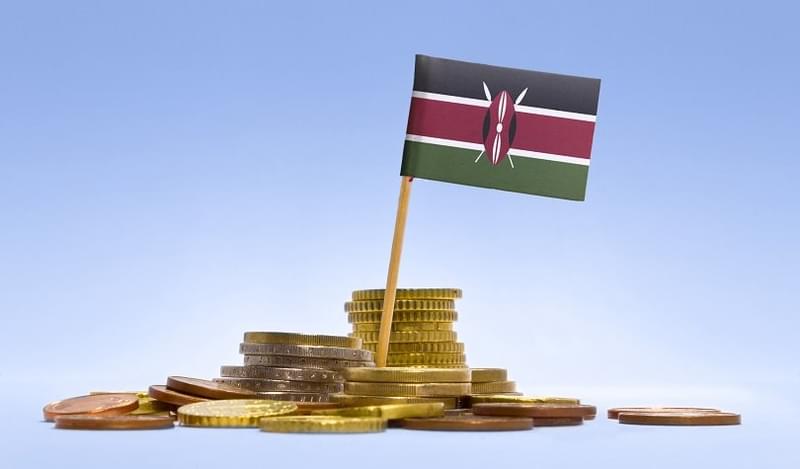Mauritius’s second-biggest lender, SBM Holdings, announced plans to acquire Fidelity Commercial Bank of Kenya, with the cost of the purchase, KES100 (US$1) dwarfed by the KES1.46bn cash injection needed to save the ailing Kenyan bank.
“The proposed acquisition, which is subject to regulatory approvals in Kenya and Mauritius, will mark the entry of SBM Group into Kenya’s banking sector. We welcome the interest of foreign banks that will contribute to the emergence of a world-class financial sector,” Kenya’s Central Bank said in a statement, adding that the deal is expected to be completed by December 31.
The US$65bn economy is third largest by GDP in Africa and has largely avoided the stress associated with depressed commodity prices, in contrast to its regional partners like Nigeria or South Africa. Last year Kenya’s economy expanded by 5.7%, and that figure is expected to reach 6% between 2016 and 2018.
But as returns on equity began to slide in the first two quarters of 2016, down from 23.8% to 20.6% for the top 11 banks, the banking system became increasingly unbalanced and smaller lenders began to feel the heat. The collapse of two major players – the Imperial Bank and Chase Bank – raised concerns about the stability of the country’s top tier financial institutions.
Some experts are nevertheless quite optimistic about the state of the sector. Standard Chartered FX trader Dickson Magecha maintained that industry-wide liquidity metrics remain very robust, especially after a near flat growth in loans in 2016, with banks retaining more cash in their balance-sheets in the face of rising NPLs and bank failures.
“If credit to the private sector remains tepid into 2017, liquidity should remain high in the banking sector with the only outlet remaining the fiscal issuances by the ex-chequer,” he stated.
However, according to the trader, the market has become two-tiered with transactions on best credit names hovering at an average of 400bp below the deals involving Tier 3 names.
In the absences of a functional horizontal repo market, the CBK is still forced to inject liquidity for smaller names even when the rest of the market is flush with liquidity, the expert explained. This brought about alternate open market operations where injection is done in one session, while the CBK mops in the next one, targeting different tiers in the banking sector.
John Gachora, Group Managing Director at NIC Bank, also believes that overall liquidity in the sector is strong, but uneven. “What is more of a concern is how it is distributed – the CB has previously admitted that the sector is rather top-heavy.”
Another worry is that the sudden collapse of the Imperial and Chase banks undermined customers’ confidence in the system, meaning that rumours about low liquidity at other banks spread like wildfire through social media and can potentially cause a run on the banks.
Others, meanwhile, see a more systematic dysfunction. “Liquidity is definitely a problem,” stated Ronak Gadhia, Africa equity Analyst at Exotix Limited.
“Looking at the last 9 months for the big banks, we have seen a massive increase in their deposit base, following the collapse of Imperial Bank, Chase bank, and a flight to quality of deposits.”
“The smaller banks already had a miniscule market share, and have continued to lose their positions further. So, liquidity profile is quite challenged, NPL ratios have been increasing last year and the trend continued this year.”
The analyst noted that, for now, the top-10 banks are not expected to experience any major issues, with liquidity still quite strong and rising, and relatively low NPL ratios.
“That said, the big banks that went down in the last year did not report any visible problems prior to their collapse, because they ran dual accounting. That is something to keep an eye on.”
The Central Bank’s decision to impose interest rate caps has exacerbated the plight of small banks, although in the long run it is expected to make the system healthier and more robust.
“The rate cap, I would say, has an overall negative affect: looking at the top 3 banks - Equity, KCB and Co-op - they are guiding to slightly lower profitability next year,” commented Gadhia. “Typically, the bigger banks have the biggest ROEs, so lower down the chain, profitability will be even lower, with some even struggling to meet their cost of capital. That makes them less appealing to foreign capital.”
This sentiment is echoed by experts across the industry, with many pointing out the additional burden of CBK’s moratorium on issuance of new banking licences, which mean it is likely that some tier-3 banks would welcome acquisitions at much lower valuations comparatively to the pre-cap period.
“After the Chase bank fall-out it was reported in the media that at least 5 foreign institutions were keen to bid to take over its operations,” said Dickson Magecha. “But their interest has since tapered off and I expect investors to remain cautious until stability returns to the sector.”
“We expect to see more consolidation as smaller banks look to reduce overheads and increase their franchise size to increase cost-efficiency and try to remain competitive,” he added. “Ultimately, though, the industry will be best served by fewer stronger banks with healthy balance sheets.
Gachora recalled discussions in the Central Bank circles mentioning interest from Chinese, Qatari, Mauritian and other countries’ banks, but the level of their involvement will be dictated by the success of continued consolidation of a still overcrowded banking sector.
“Everyone has been anticipating some form of consolidation in the banking sector, but the question is what shape that process will take. Will it be foreign lenders coming in to the rescue, or local players? The Fidelity deal shows that foreign lenders are still intent on playing a significant role in that consolidation,” noted Gachora.
Another option is that some of the new players in the industry may use the opportunity to purchase ailing local banks at low price in order to circumvent licencing restrictions. Dubai Islamic Bank and Mayfair Bank, for example, recently announced operational readiness. It remains to be seen if they will still hope to get a license or might be forced to seek to acquire an existing bank to commence operations.
With tight local lending rates, Kenya could now turn to international debt markets. The African country issued its debut Eurobond in 2014, borrowing a total of US$2.75bn in an initial issue. The yield on this bond due June 2024 went up 170bp to 8.54% this month.
Further issuances have been hinted at in recent months, but there are some concerns about spiralling debt. In less than three years, the country’s external debt has increased five-fold from KES361.73bn in May 2003 to KES1.8tn as of June 2016, with total public debt standing at around KES3.2tn.
“With an over 13pp of Gross Domestic Product (GDP) increase in the debt-to-GDP ratio within a three-year period, and with debt levels over 50% of GDP and fiscal deficits well above the medium term 4.5% target, the fiscal policy environment is fast eroding. Margins for further debt accumulation are narrowing,” warned the World Bank in its latest report on Kenya.
Gachora admitted that these deficits need to be addressed to maintain the stability of the shilling, but saw the current dynamic as more positive rather than negative.
“Current account deficit has recently come down, there is some progress,” said the banker. “Manufacturing sectors are not firing as strongly as they should and there is a number of other microeconomic issues. But as far as the Eurobond issuance is concerned, the government has enough local liquidity and they’ve received a lot of bids for their notes.”
Observers point to a number of factors that help Kenya remain an attractive destination for investors and lenders, even during challenging times.
One is that Kenya has been running a large dual deficit for some years, yet capital continued to flow into the country because much of it went to infrastructure funding.
“Some of the biggest infrastructure projects are now coming to an end, so we are seeing a natural decline in the deficit, and debt-to-GDP ratios is gradually levelling off,” Gadhia explained.
Another advantage is that for many foreign lenders Kenya is not just an exciting opportunity in itself – it is also a gateway to the whole East African market. According to Magecha, this is a particularly important advantage during the commodity-driven economic crisis in hitherto competing economies in the rest of Africa – such as Nigeria, Angola, Ghana, Zambia etc.
But while the economic fundamentals are solid enough for Kenya to tap debt markets further, political challenges could undermine that effort. As Gadhia pointed out, there was a lot of political noise around Kenya’s previous Eurobond issuance and the upcoming election could make it difficult for the country to issue again in the next 12 months.
“That said, another bond has been accounted for in the budget, so it would not be entirely surprising,” he conceded. “Foreign funding is likely to come from concessional loans, which they have been very good at tapping in recent years.”
So, while potential investors will continue to monitor the consolidation of the banking sector closely in the coming months, the country appears to be on the right development course for now and therefore is likely to remain an attractive destination for strategic investment.









